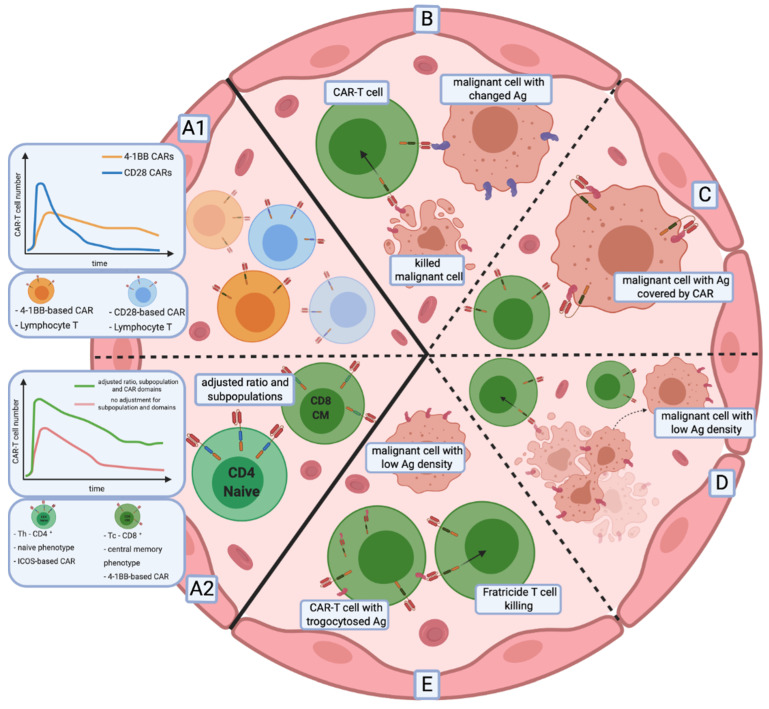Figure 2.
Remaining issues of CAR-T cell therapies in haemato-oncology. Relapses in a long-term observation after CAR-T cell infusion have two primary sources: CAR-T cells persistence (A1,A2) and the escape of malignant cells from immune surveillance (B–E). (A1) The persistence and proliferation rate of CAR-T cells depends on the co-stimulation domains. Additionally, (A2) subpopulation composition of the CAR-T cell infusion, as well as the phenotype of lymphocytes, influence the proliferation and persistence of modified effector cells. (B–E) Mechanisms of immune escape of neoplastic cells from CAR-T cells. (B) Targeted antigen changes as a result of mutation or splicing alteration. (C) Unintentional modification of neoplastic B cells with a CAR that masks the targeted epitope, rendering it undetectable by CAR-T cells. (D) Infusion of CAR-T cells triggers the selection of malignant cells with low antigen density that are resistant to effector cells. (E) The decrease of antigen surface level results from CAR-T cell-mediated trogocytosis, with subsequent induction of fratricide T cell killing and CAR-T cells with an exhausted phenotype. Abbreviations: Th—helper T cell, Tc—cytotoxic T cell, ICOS-based CAR—inducible co-stimulator-based CAR.

